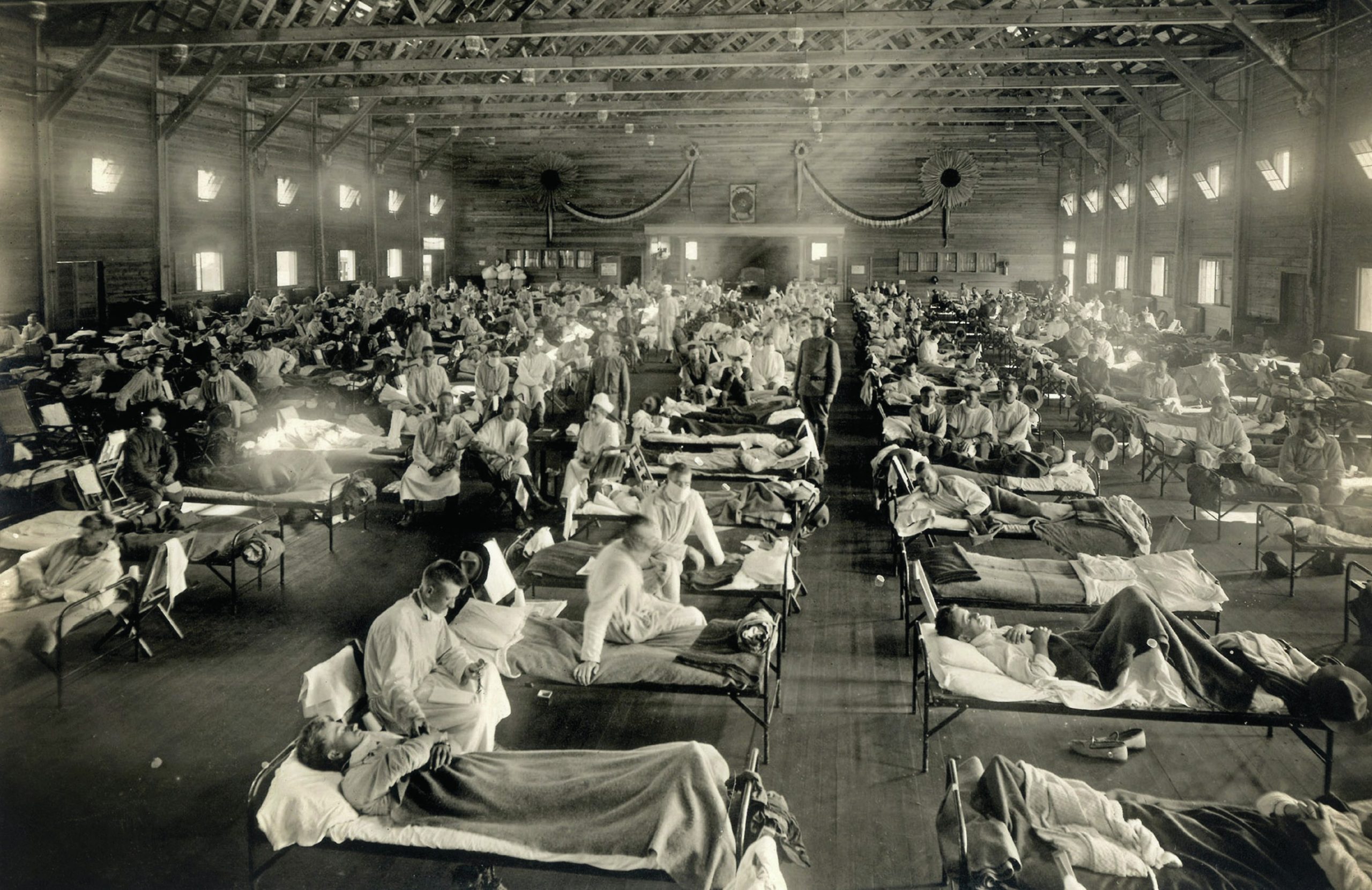
As the First World War drew to an end, Spanish flu infected around a third of the world’s population. The worldwide death toll was somewhere between 20 million and 100 million, with 50 million being a generally accepted figure. Countries had been decimated by war and mortality records were inadequate, hence the wildly different estimates, but Spanish flu is by far the worst human disease outbreak on record. Some even speculate that it may have killed more than the infamous Black Death. If an equally deadly virus were to emerge today, it would cause more deaths in a year than heart disease, cancer, stroke, lung disease, AIDS and Alzheimer’s disease combined.
However, despite the remarkable magnitude of the pandemic, Spanish flu has been somewhat forgotten. Perhaps coming immediately after the heartbreak and social and political upheaval caused by a war that claimed 9 million soldiers and a further 9 million civilians has lessened its impact. While not on the same scale as the Spanish flu, seasonal flu viruses still cause illness and death every winter. So why does this happen and are there any lessons we can learn from the events of 1918?
Your organisation does not have access to this article.
Sign up today to give your students the edge they need to achieve their best grades with subject expertise
Subscribe




